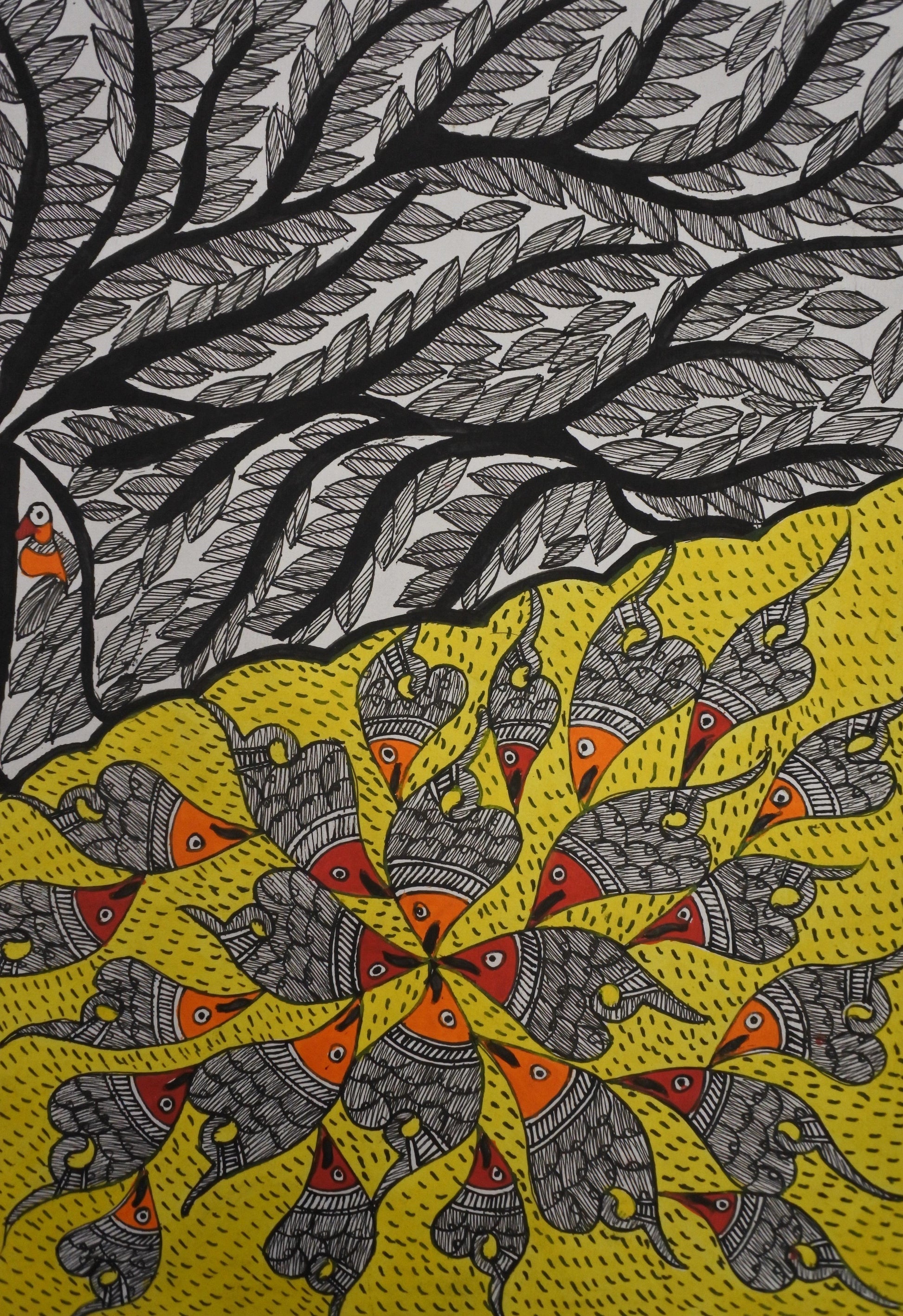
Gond Tree & Fishes
Reliable shipping
Flexible returns
The "Gond Tree & Fishes" is a painting that effectively juxtaposes the rich symbolism characteristic of Mithila with the vibrant style belonging to Gond. The fish here symbolize fertility, prosperity, and abundance and blend with the tree as a universal symbol of life, growth, and connectedness. This unison emphasizes the balance and interrelationship among the elements in nature.
While reflecting the cultural essence of Mithila traditions, this art embodies intricate patterns and natural dyes, combining them with the bold strokes and textures of Gond artistry. It celebrates the harmony and abundance of life that coexist in nature. A true masterpiece, this painting is a tribute to nature's cycles of growth and renewal.
Product Details
- Dimensions: Available in multiple sizes.
- Material: High-quality canvas or handmade paper.
- Techniques: Traditional Mithila painting techniques with natural dyes.
- Origin: Nepal, created by local artisans.
- Frame: Available with or without a frame, depending on preference.
FAQs
What is the significance of the tree in the painting?
In Mithila painting, the tree stands for growth, stability, and the nurturing aspect of nature. It connects many life forms and stands as a representation of prosperity. Its depiction reflects harmony between human beings and nature.
How are fish and trees related in the context of this painting?
Fish and trees together symbolize the unity of aquatic and terrestrial ecosystems. They show how natural elements depend on each other for survival. This relationship reflects the interconnectedness of all life forms in creating abundance.
Why is the theme of prosperity emphasized in this painting?
The fish and the prosperous tree together symbolize wealth and fertility. They represent nature's capacity to provide for life when all elements fall into place. This prosperity theme also reflects cultural values in Mithila traditions.
What does the symmetry in the painting symbolize?
As perceived in Mithila art, symmetry signifies order, balance, and perfection in the natural world. It conveys harmony in relationships between living beings and the environment. This alignment is seen as essential for prosperity and peace.
Do traditional Mithila art styles inspire this painting?
Yes, the colors used in this painting borrow from the vibrant color profile of Mithila art and its detailed patterns. The style emphasizes the symbolic meanings of fish and trees in such detail. It reflects a deep cultural and spiritual belief rooted in the Mithila region.
What deeper cultural meanings are associated with this artwork?
The painting shows respect for nature, fertility, and the life cycle in Mithila art. It celebrates the harmony between elements as the root of prosperity. These aspects are culturally deep-rooted and engrained in the traditional beliefs and heritage of the region.

